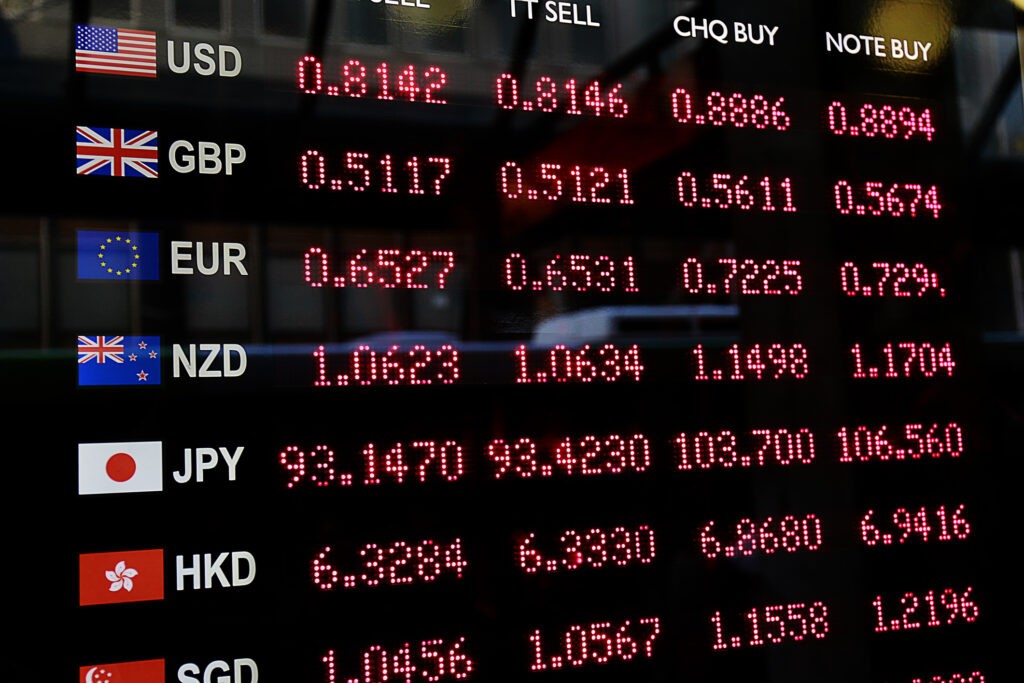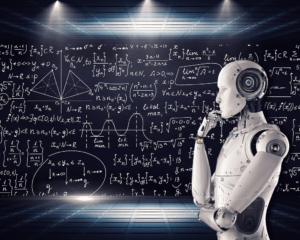Chances are you have heard of Forex. After all, it is the most liquid marketplace on the planet. With that said, hedging in forex is a very effective way of counteracting the risk of price swings in this somewhat volatile trading sphere.
Our Forex Signals
1 - month
Subscription
 Up to 15 signals daily
Up to 15 signals daily 76% success rate
76% success rate Entry, take profit & stop loss
Entry, take profit & stop loss Amount to risk per trade
Amount to risk per trade Risk reward ratio
Risk reward ratiomonth
3 - month
Subscription
 Up to 15 signals daily
Up to 15 signals daily 76% success rate
76% success rate Entry, take profit & stop loss
Entry, take profit & stop loss Amount to risk per trade
Amount to risk per trade Risk reward ratio
Risk reward ratiomonth
 Most popular
Most popular
6 - month
Subscription
 Up to 15 signals daily
Up to 15 signals daily 76% success rate
76% success rate Entry, take profit & stop loss
Entry, take profit & stop loss Amount to risk per trade
Amount to risk per trade Risk reward ratio
Risk reward ratiomonth
Lifetime
Subscription
 Up to 15 signals daily
Up to 15 signals daily 76% success rate
76% success rate Entry, take profit & stop loss
Entry, take profit & stop loss Amount to risk per trade
Amount to risk per trade Risk reward ratio
Risk reward ratioSeparate Swing Trading Group
 Up to 3 signals weekly
Up to 3 signals weekly 76% success rate
76% success rate Entry, take profit & stop loss
Entry, take profit & stop loss Amount to risk per trade
Amount to risk per trade Risk reward ratio
Risk reward ratiomonth
1 - month
Subscription
 Up to 15 signals daily
Up to 15 signals daily 76% success rate
76% success rate Entry, take profit & stop loss
Entry, take profit & stop loss Amount to risk per trade
Amount to risk per trade Risk reward ratio
Risk reward ratiotime
As such, if you are looking for a new forex strategy, then hedging currencies could be it. To give you a little more information on the subject, we are going to go through everything from how to hedge in forex to key strategies and tools you can utilise.
3
Payment methods
Trading platforms
Regulated by
Support
Min.Deposit
Leverage max
Currency Pairs
Classification
Mobile App
Min.Deposit
$100
Spread min.
Variables pips
Leverage max
100
Currency Pairs
40
Trading platforms
Funding Methods





Regulated by
FCA
What you can trade
Forex
Indices
Actions
Cryptocurrencies
Raw Materials
Average spread
EUR/GBP
-
EUR/USD
-
EUR/JPY
0.3
EUR/CHF
0.2
GBP/USD
0.0
GBP/JPY
0.1
GBP/CHF
0.3
USD/JPY
-
USD/CHF
0.2
CHF/JPY
0.3
Additional Fee
Continuous rate
Variables
Conversión
Variables pips
Regulation
Yes
FCA
No
CYSEC
No
ASIC
No
CFTC
No
NFA
No
BAFIN
No
CMA
No
SCB
No
DFSA
No
CBFSAI
No
BVIFSC
No
FSCA
No
FSA
No
FFAJ
No
ADGM
No
FRSA
71% of retail investor accounts lose money when trading CFDs with this provider.
Min.Deposit
$100
Spread min.
- pips
Leverage max
400
Currency Pairs
50
Trading platforms
Funding Methods




Regulated by
CYSECASICCBFSAIBVIFSCFSCAFSAFFAJADGMFRSA
What you can trade
Forex
Indices
Actions
Cryptocurrencies
Raw Materials
Etfs
Average spread
EUR/GBP
1
EUR/USD
0.9
EUR/JPY
1
EUR/CHF
1
GBP/USD
1
GBP/JPY
1
GBP/CHF
1
USD/JPY
-
USD/CHF
1
CHF/JPY
1
Additional Fee
Continuous rate
-
Conversión
- pips
Regulation
No
FCA
Yes
CYSEC
Yes
ASIC
No
CFTC
No
NFA
No
BAFIN
No
CMA
No
SCB
No
DFSA
Yes
CBFSAI
Yes
BVIFSC
Yes
FSCA
Yes
FSA
Yes
FFAJ
Yes
ADGM
Yes
FRSA
71% of retail investor accounts lose money when trading CFDs with this provider.
Min.Deposit
$50
Spread min.
- pips
Leverage max
500
Currency Pairs
40
Trading platforms
Funding Methods




What you can trade
Forex
Indices
Actions
Raw Materials
Average spread
EUR/GBP
-
EUR/USD
-
EUR/JPY
-
EUR/CHF
-
GBP/USD
-
GBP/JPY
-
GBP/CHF
-
USD/JPY
-
USD/CHF
-
CHF/JPY
-
Additional Fee
Continuous rate
-
Conversión
- pips
Regulation
No
FCA
No
CYSEC
No
ASIC
No
CFTC
No
NFA
No
BAFIN
No
CMA
No
SCB
No
DFSA
No
CBFSAI
No
BVIFSC
No
FSCA
No
FSA
No
FFAJ
No
ADGM
No
FRSA
71% of retail investor accounts lose money when trading CFDs with this provider.
We are also going to shed some light on how to choose a good broker that allows you to hedge currencies in a cost-effective and safe environment.
Eightcap - Regulated Platform With Tight Spreads

- Minimum deposit of just 250 USD to get lifetime access to all the VIP channels
- Use our Secure and Encrypted Infrastructure
- Spreads from 0.0 pips on Raw Accounts
- Trade on the Award-Winning MT4 & MT5 Platforms
- Multi-jurisdictional Regulation
- No Commission Trading on Standard Accounts

What is Hedging?
In a nutshell, ‘hedging’ is something traders do in order for them to counterbalance the threat of price swings further down the line. By doing this, you are protecting your position. The protection mentioned is considered a short-term solution.
It will usually be implemented by the trader as a result of volatility in the forex market or a big news story which is likely to affect the currency market as a whole.

Hedging is used by both major corporations and everyday traders. There are a few different strategies and tools that you can use to start hedging and we are going to explain a little more on each shortly.
Why do Traders Hedge Forex?
There are many reasons why traders hedge forex. It is usually a way of creating a safety net against currency rate fluctuations. Much like with any trading arena, there is no real way of creating a risk-free forex environment. With that said, there is no denying that a hedging strategy can help alleviate or at least regulate your losses.
Due to the fact the forex market is volatile by nature, hedging with currencies differs somewhat to hedging in alternative markets. Granted, some traders feel like there is no point in hedging and would rather just accept the nature of trading forex. Then there are some who would prefer to lessen their risk in such a volatile market.
The fact is – unless you are happy to just accept that trading forex can be risky, then you might want to utilise hedging as a way to offset short-term losses. If you have a feeling that the value of a currency pair will depreciate, before bouncing back, you can incorporate a hedge into your strategy.
Next, we are going to run you through some of the most popular strategies and tools used by traders who hedge forex – so you will be trading like a pro in no time!
Hedging Strategies
Now you know what it means to hedge in the context of forex trading, we have gone into more detail about the different ways you can hedge in the currency market.

Direct Hedging
Sometimes called ‘simple hedging’, this is usually when a trader opens two different positions on an ongoing position. This will be one long (buy order) and one short (sell order) – so they are going in conflicting directions.
Here is an example of what hedging looks like:
- Let’s say that you already had a short position on a forex pair like AUD/USD
- Then news breaks of an event which you think will affect the USD
- You decide to open a long position on the very same pair
- You have just hedged your forex trade
Your net profit in the direct hedge will be zero, so you maintain your initial position in the forex market. This is so that you are prepared for when the trend goes into reverse.
If you hedge – you can make a profit with the second trade when the market is going against your initial trade. If you decided not to hedge that position – you might have closed your trade and taken the loss on the chin.
It is worth noting that not every forex broker will allow direct hedges, so consequently would instead choose to net the positions off.
Multiple Currency Hedging
Another forex hedging strategy is to choose two different currency pairs which are considered to be ‘positively correlated’ and take opposing positions on each pair.
The pair ‘correlation’ illustrates statistically how the currencies have behaved over a specific period of time. Mainly, whether they have moved in opposite directions, the same direction, or randomly.

Correlation coefficients are used as a measuring technique in this instance, to determine the strength of the relationship between two fluctuating currencies. This is shown in the form of decimal from -1 up until +1.
Here is an example of what correlation in the forex hedging space would look like:
- Positive Correlation: Let’s say the correlation is +1. This demonstrates that both currency pairs are going to move in exactly the same direction most of the time. Some positive correlation pairs include AUD/USD, EUR/USD, GBP/USD, and NZD/USD. For our example, we will use AUD/USD and EUR/USD. Put simply – if AUD/USD is trading upwards, then EUR/USD will go the same way.
- Negative Correlation: On the other hand, let’s use USD/CHF and USD/CAD. In this example, a correlation of -1 would illustrate that USD/CHF and USD/CAD are going to move in opposing directions most of the time. A few examples of negative correlation currency pairs are USD/JPY, USD/CAD, and USD/CHF. As you can see, the USD is the base currency.
Let’s imagine that you have gone short on GBP/USD, then you decide to open a long position on EUR/USD to hedge your USD risk.
If the pound did drop against the US dollar, then that long position on EUR/USD would make a loss. However, it would be alleviated by gains on your GBP/USD position. Essentially, if the USD falls at this point, any losses to that short position will be counterbalanced by your hedge.
Hedging multiple currency pairs should not be taken lightly, as there are risks involved. In our example, we hedged our risk on the USD, but in turn, we also exposed ourselves to a short risk on EUR, and a long risk on GBP. The thing is, there are no guarantees with any trading strategy. With that said, if you successfully reduce your risk in this way then you might see gains.
The main contrast between the aforementioned ‘direct hedging’ and ‘multiple currency hedging’ is that when hedging with multiple currencies – a single position could potentially produce more gains than the other losses. With a direct hedge, the net outcome would rarely surpass zero.
Options Hedging
A forex option enables you to trade an FX pair at a set price before a predefined time has elapsed. When it comes to hedging tools, options are really useful. The reason is that they give you the opportunity to reduce your risk and you only need to pay for the option ‘premium’ itself.
Here is an example of a forex options hedging strategy:
- You have a buy order on GBP/USD at a price of 1.32.
- However, you are preempting that there will be a sudden decline.
- For this reason, you decide to hedge your risk by using a put option at 1.32, which expires after 1 month.
In our example above, if by the time the expiry date arrives the price has gone lower than 1.32 – your long position will see losses, but your option will make gains and balance that risk.
If the price of GBP/USD gone higher than 1.32, then you would only need to pay the price of the put option (premium).
It is really important to note that not all broker platforms offer options to traders. So if this is something you are interested in then you will need to make sure that the platform allows you to trade that way.
Hedging Forex – Tools
When it comes to functions, there are a few terms you will see regularly when hedging in forex. As such, we have put together an explanation of some commonly used hedging tools.
Automated Forex Hedging Robot
Using an automated trading system when forex hedging can be extremely useful. This is especially the case if you are a new trader or you simply want to take a step back. The chances are you have heard of forex trading robots, also called forex EAs (Expert Advisors). They have had a lot of social media coverage of late – namely due to the celebrity endorsement claims flying around.

In other words, it will combine trend investigation, buying, selling, and opening multiple positions at once. Much like when you hedge yourself, the forex robot is aiming to maintain your fund flow and offer you a safety net for when, or if, something unexpected happens in the forex market.
Net off
In this kind of trade, unless you have placed a limit or stop order, your broker will automatically close the first position. Essentially, the new trade is going to cancel it out – which is known as ‘netting off’.
Here is an example of a ‘net off’:
- Let’s say you have a buy order on EUR/USD for €200.
- Then you execute a €200 sell order on EUR/USD (to hedge it).
- The original position would be closed due to you placing the opposite order.
- Your order has been ‘netted off’.
In other words, whether you are trading forex, stocks, hard metals, bonds, or any asset class for that matter – you will always close an open position by placing an opposite order to the one outstanding. As such, you will need to find a forex broker that allows you to have both a buy and sell position open at the same time, on the same currency pair.
Force Open
Force open is a useful hedge trading function which prevents brokers from netting off your positions. Put simply, this function means that you can open a new position – in the opposing direction to that of the initial trade.

Below is an example of ‘force open’:
- In this instance, let’s assume you open a £500 short position on AUD/NZD.
- You predict that AUD/NZD will see a brief price rise.
- Let’s say you now open a £500 buy position on AUD/NZD (in order to reduce potential losses).
In this scenario, brokers will ordinarily net off both of your positions. So as we explained above, this means that your first position will be closed. However, by choosing to ‘force open’, both of your orders will still be carried out. As such, this allows you to hedge a single currency pair.
How to Find a Broker Offering Hedging
Some brokers do not allow hedging, so finding one that does can be a challenge. We have compiled a list of key metrics to look out for when looking for a brokerage who will allow you to hedge.

Licence and Regulation
It is crucial that you make it a priority to find a broker that is fully regulated by an appropriate authority. For instance, the Financial Conduct Authority (FCA).
FCA rules and regulates over 60,000 broker platforms in the UK. Ensuring that a broker holds a licence is vital when it comes to protecting traders from financial crime or broker bankruptcy. Not to mention protecting client transparency and creating a fairer financial space for everyone.
Broker Fees
Every broker you come across will differ slightly when it comes to fees. Whilst one broker might charge a commission for every single trade, another platform will be commission-free – but charge hefty overnight and inactivity fees.
If the broker you are looking at has high commission fees attached to each forex trade, then you might want to reconsider them for your hedging endeavours.
As an example:
- Let’s say you are trading AUD/USD.
- Your broker wants 0.8% commission per trade.
- Now say you stake £1,500.
- Your broker is going to take £12 when the position is opened.
- Assuming your hedging position is closed at the break-even point – you will again need to pay a £12 commission.
In our example, a commission eating up that much on every trade would just make hedging unviable for you. Of course, the idea with hedging is not to make huge gains necessarily, it is to reduce your risk of huge losses, by balancing it out.
Thankfully there are a handful of highly professional and regulated brokers in the space which will allow you to trade completely commission-free!
Spreads
The spread is simply the difference between the buying price and the selling price of an FX pair – expressed in pips. The lower the number of pips the better. Tight spreads are always great for traders, but it is especially the case when it comes to hedging forex.
To give you an example of what the spread might look like with a 4 pip spread:
- Let’s imagine you are trading GBP/USD.
- The ‘buy’ price is 1.1443.
- And the ‘sell’ price is 1.1447.
4 pips might not sound like a lot, but in the forex broker space, it is considered expensive. As such, it would actually make hedging forex impractical.
It is for that reason that most of the brokers listed on this page offer spreads of less than 1 pip on major currency pairs – which is really competitive. Platforms like eToro also offer variable spreads. Put simply, this means that the spreads change according to market conditions.
Currency Pair Diversity
When it comes to forex, there are tonnes of pairs to choose from. Ideally, your forex broker will have a good selection on offer for you – from minors and major pairs to exotics and emerging currencies.
Hedging Strategies
Interestingly, just because a broker allows hedging, it does not necessarily mean they will let you use any method. So, if after reading this page there is a specific strategy (like scalping) you want to try, then make sure your brokerage allows it.
Deposit and Withdrawal
Again, each platform will differ. Most broker sites allow customers to deposit using a variety of payment methods such as a credit/debit card, bank transfer, and e-wallets like PayPal. Some companies even allow traders to pay via certain cryptocurrencies such as Bitcoin, although granted, it is not as commonly seen as Visa.

On the subject of processing times, the vast majority of brokers will process your deposit immediately. However, when it comes to payment methods, it is important to note that if you deposit via a bank transfer then it can take days to go into your trading account.
Withdrawals are easy on most brokers platforms, however, always check the fee table to make sure you are not going to be charged a hefty price.
Technical Indicator Tools and Educational Material
Traders all over the world swear by technical indicators and tools to help them in making trading decisions.
We have listed some of the most commonly used technical indicators in the space:
- Moving average convergence divergence (MACD).
- Moving average (MA).
- Relative strength index (RSI).
- Parabolic Stop and Reverse (SAR).
- Average directional index (ADX).
- Exponential moving average (EMA).
- Standard deviation.
- Bollinger bands.
- Fibonacci retracement.
- Ichimoku cloud.
- Stochastic oscillator.
Team up some of these technical indicators with money management tools and you could be in a much better position to start with. Another way to get used to these tools is to practice on a demo account.

This way you can trade with demo money in a live market environment and thus – get to grips with forex hedging without risking your own capital.
Customer Service
Customer service is a crucial part of having a good broker/trader relationship. The last thing you want is a brokerage with poor service or a team who is hardly ever there. Forex is a 24/7 market so ideally, you want a customer service team to be available 24/7 too.
Common customer service options are live chat, email, contact form, and telephone. Having a comprehensive FAQ section can also help you if you are in a trading jam.
How to Sign up to a Forex Broker
Now you know what hedging forex is all about, and the key metrics to look out for when choosing a broker, you are probably eager to get started. If so, follow the step-by-step guidelines outlined below to get your forex hedging career started right now!
Step 1: Sign up to the Broker
Go to the website of the broker you have selected, and hit the ‘sign up’ button.
You will be required to enter a range of personal information – such as your full name, home address, date of birth, email address, and phone number. You will also need to choose a username and a strong password.
Step 2: Submit Your ID
As per regulatory body rules (KYC), any forex broker worth its salt will need a copy of your passport or driving licence – to confirm your identity.
In addition to this, the company will likely need your national tax number and a utility bill issued within the last 3 months. Furthermore, you will need to provide a brief trading history and some details about your financial situation.
Step 3: Make a Deposit
Next, you will need to deposit some funds, and it must be the minimum amount required on the platform. There are usually several payment methods available, and as we have said, most are instantaneous, apart from bank transfer which can take several days.
Step 4: Start to Hedge Forex/Try a Demo Account
That is it, you are now signed up with your own forex broker account and can start trading. Even if you already have lots of trading experience, it is still not a bad idea to start with a demo account. This is especially the case if you are new to forex hedging.
Best Forex Brokers Offering Hedging in 2023
Now you are armed to the teeth with everything to do with hedging forex, you just need to find a broker who accepts hedging strategies and you can get trading.
We have listed the best 2 brokers who are regulated and fit this description, all of which are worth your consideration.
1. AvaTrade - Top Rated Social Trading Platform
Established in 2006, AvaTrade is a well established forex broker with over 200,000 clients on its platform. The broker is offering new clients who deposit $100 or more a 20% welcome bonus on forex. this is payable upto $10,000 and to qualify for the maximum value, you need to deposit $50,000 into your account.
This platform has a good variety of instruments on offer for traders, on various markets. Moreover, this brokerage is really versatile. You can access AvaTrade via DupliTrade (a social trading platform), MT4/5 or AvaOptions.
This broker platform supports heaps of instruments, like cryptocurrency and stock CFDs, and there are well over 50 different currency pairs available. All you need to get signed up and start hedging forex is £100 for your initial deposit. AvaTrade charges zero commission fees and offers clients competitive tight spreads.
Unlike some trading platforms, this site has risk management features and technical analysis tools. Leverage on forex is capped at 1:30 and there are zero limitations on hedging or automated trading robots. Like all of the other brokers on our list, AvaTrade is fully regulated. In fact, the company holds licences from several jurisdictions.

- Zero commission trading
- Tight spreads from 0.70 pips
- Technical analysis and risk management tools
- Inactivity fee is £50 per quarter
- No Telephone support
2. VantageFX – Ultra-Low Spreads
VantageFX VFSC under Section 4 of the Financial Dealers Licensing Act that offers heaps of financial instruments. All in the form of CFDs - this covers shares, indices, and commodities.
Open and trade on a Vantage RAW ECN account to get some of the lowest spreads in the business. Trade on institutional-grade liquidity that is obtained directly from some of the top institutions in the world without any markup being added at our end. No longer the exclusive province of hedge funds, everyone now has access to this liquidity and tight spreads for as little as $0.
Some of the lowest spreads in the market may be found if you decide to open and trade on a Vantage RAW ECN account. Trade using institutional-grade liquidity that is sourced directly from some of the top institutions in the world with zero markup added. This level of liquidity and availability of thin spreads down to zero are no longer the exclusive purview of hedge funds.

- The Lowest Trading Costs
- Minimum deposit $50
- Leverage up to 500:1
To Conclude
The saying ‘hedge your bets’, meaning to counterbalance your risk, has been around in England since the 1600s. To this day, traders use the phrase and the strategy, on a regular basis. Of course, hedging in forex does not come without its risks, but it is a great way to potentially lessen those losses in such a volatile market.
Now you know just about everything you need to know about how to hedge forex, you can go and find yourself a good broker. The five we have listed on this page are all regulated by major regulatory bodies, meaning your personal information is safe and your money is held in a separate bank account to that of the broker company.
AvaTrade - Established Broker With Commission-Free Trades

- Minimum deposit of just 250 USD to get lifetime access to all the VIP channels
- Awarded Best Global MT4 Forex Broker
- Pay 0% on all CFD instruments
- Thousands of CFD assets to trade
- Leverage facilities available
- Instantly deposit funds with a debit/credit card

FAQs
What does hedging forex mean?
Can I practice hedging forex on a demo account?
How do I know if the forex broker is legit?
Can I practice hedging forex?
Am I able to hedge forex on my mobile phone?
Read more related Articles:
Forex Trading for Beginners: How to Trade Forex and Find the Best Platform 2024

